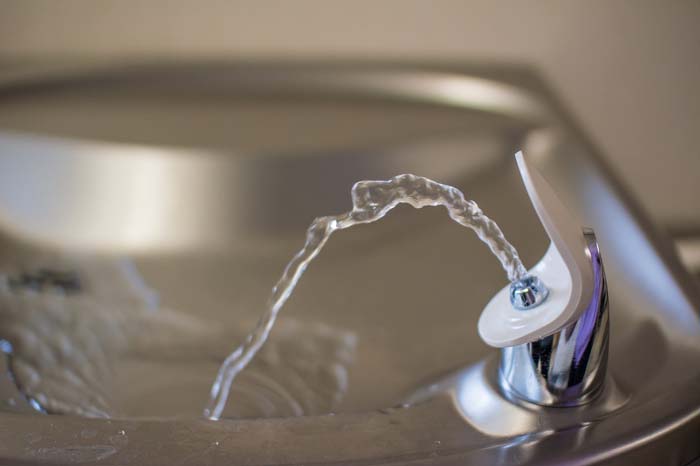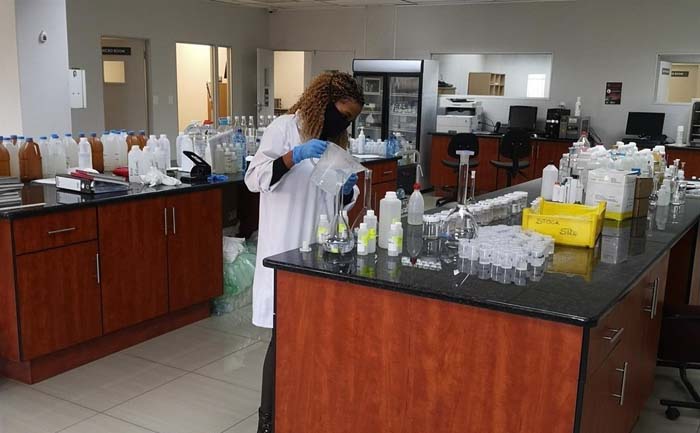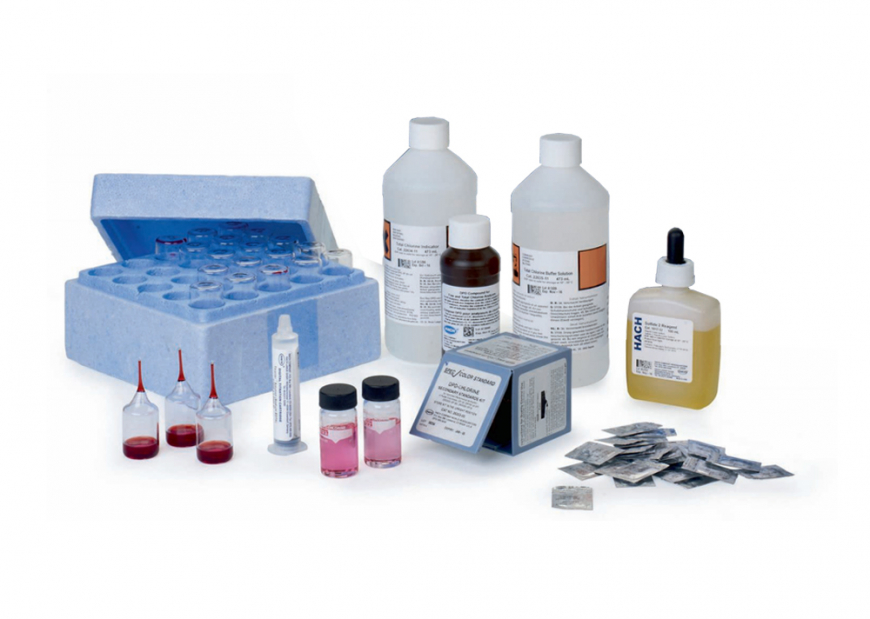
Although there are several potential justifications for conducting a water quality examination, the most common is determining the water’s purity level. Several factors contribute to water quality changes. They include the need to understand the components that contribute to these changes. After that, develop effective strategies to minimize water pollution and adhere to strict regulations and controls to limit water contamination. Biological and chemical contaminants in water are easily detected using various modern water quality testing equipment.
You can use them to identify turbidity, nitrogen, pH value, rate of movement, conductivity, oxygen, total dissolved solvents (TDS), and other factors. You may use these tools to check all sorts of things in the water.
 Types of Water Testing Equipment
Types of Water Testing Equipment
Chemical test kits:
You can measure various compounds in water using these test kits, which include chemical reagents. This water quality testing equipment is sold as a whole kit, though the components may differ among brands. All necessary testing equipment will be available to carry out the test. Additionally, the kit includes a list of simple-to-follow instructions. These direct the user to the tasks that they should do. There are a lot of test kits that come in a box-carrying container. This makes it simple to store and transport them. Typically, the following tests are available in chemical test kits:
- Iron
- Phosphate
- Sodium nitrite
- Copper
- Sulfate
- Total Calcium and Hardness
- Silica
- Chloride
To determine the water quality, two distinct chemical test kits are available:
Colorimetric Test Kits:
These test kits aid in understanding the concentration of the chemical through particular colors. Dark colors often depict high concentrations, and vice versa.
Titrimetric Test Kits:
Titrimetric test kits can help find the solid concentration in water samples. A standard titrant will treat the sample and provide an indication. You keep adding this titrant until you see a change in color. The titrant concentration determines how much of the substance is dissolved in water.
- Buffer and Calibration Solutions:
Professionals use conductive standard solutions to calibrate ORP, TSD, and pH testers in the factory. Additionally, to guarantee the accuracy of the instruments, you should use these solutions in accordance with the set criteria. The regular use of these machines will determine how often they need adjustments. Recalibrating pH models every 1 or 2 weeks using a pH 7 buffer is best. Additionally, you need to use a 10 buffer or pH 4 to test them.
- Portable Total Dissolved Solids (TDS) Testers:
Chlorides, sodium bicarbonates, potassium, magnesium, sulfates, and calcium are all part of these inorganic salts. Numerous small, handheld total dissolved solids meters with numerical displays can measure concentrations of total dissolved solids in water up to 9,990 ppm. This TDS meter is as simple as any other portable pH meter. You can submerge these testers in water to obtain the reading.
- Portable pH Meters:
A portable pH meter is optimal for measuring water pH levels in the 0–14 pH range. The majority of handheld digital meters include numerical displays. You have to power them on and submerge them in the solution you want to test. You can give them a little stir until the pH level becomes stable.
- Pocket Oxidation-Reduction Potential (ORP) Testers:
Electrolysis is when a molecule or ion loses or gains an electron. It also occurs in commercial and residential water treatment systems to prevent contamination, which is a typical occurrence in pool and spa water treatment systems. A high oxidation-reduction potential value makes water more effective as a disinfectant. Measurements of water’s ORP up to 1000 mV are commonly performed using compact-sized ORP testers. Their functionality is comparable to that of portable TDS testers and pH meters.
- Turbidimeters or Turbidity Meters:
The turbidity of water is a factor that influences its clarity. Several suspended particles can cause water to lose some of its clarity. Water gets murkier as the concentration of suspended particles rises. An essential indicator of water quality is turbidity. When suspended solids scatter light at a right angle, a turbidity meter or turbidimeter can detect this and record the amount of scattered light. Light scattering could be different for particles of different sizes.
If you are familiar with the common applications of various water quality and testing equipment, you should be able to choose the right tool for the job.
Three types of water quality testing
Possible contamination, pH, temperature, and hardness are just a few of the water factors that may be checked with water testing.
Digital Instruments
You can check the quality of your water with one of several portable digital instruments. Although more expensive than the other two tests, these yield reliable results. Only trained experts should handle the instruments. This is because they must be calibrated correctly in order to produce reliable data. Quick bacterial screening is possible with luminescence testing instruments. Additionally, electrochemical testers help evaluate the water’s electrical conductivity, dissolved salt and solids, pH, and dissolved oxygen.
Test Strips
You can test your water using these strips. The color-changing strips can help detect the presence of specific compounds. Comparing them to a chart will help you determine the quantity of the chemical. One common purpose of these tests is determining how much chlorine or pH is in the water. These tests are cheap and quick to get but aren’t as precise as others. This is because of their poor resolution and difficulty understanding the implications for your safety and health.
Professional Lab Tests
Sending your water sample to a certified water testing lab will provide the most accurate results. These businesses offer a variety of water testing options. This includes basic scans to compare your water to EPA guidelines and more in-depth health scans to find out if your water needs more filtering. A professional testing facility may use photometric test kits, spectrophotometers, or more sophisticated colorimetric comparison tests. This will give a more accurate reading of the pollutants in your water and their concentrations.
Water quality testing parameters
Chemical
The presence and amounts of various chemicals are measured as part of the chemical drinking water testing parameters.
- Radium, radon, other radioactive materials, and runoff from nuclear and industrial facilities.
- Water’s pH, which indicates its alkalinity or acidity, should be between 6.5 and 8.5.
- Arsenic, mercury, lead, and cadmium are toxic inorganic metals.
- Sodium bicarbonate is in water and acts as a laxative.
- While zinc, manganese, iron, and copper are present in nature, industrial waste can increase their concentrations.
- Nitrogen from fertilizers.
- Disinfectants, detergents, pesticides, and herbicides are among over a hundred man-made pollutants that are toxic organic chemicals.
- Residual chlorine and chloride are left over after disinfecting water for human consumption.
- Minerals in solution, such as magnesium and calcium (water hardness).
- Although specialists inject a small amount of fluoride into water to prevent tooth enamel from wearing away, excessive amounts threaten human health.
In order to establish what water quality standards are necessary to safeguard human health and maintain a healthy ecosystem for aquatic plants and animals, it is usual practice to test for at least one of these substances.
Physical
The following physical factors are the most essential in determining water quality:
- When pollutants are present at extremely dangerous levels, the smell, taste, and color change noticeably or become unpleasant. You can’t smell or see any color in pure water. Color, smell, and taste can originate from dissolved gases, organic compounds, or different metals; thus, they do not necessarily pose a health risk.
- The oxygen-holding, flavor, and palatability of water and the ease with which certain chemical reactions can occur are all affected by temperature.
- Water turbidity is the degree to which light is able to flow through it and is a measure of how murky the water is. Water with a cloudy appearance is unsightly, can conceal dangerous bacteria, and makes heavy metals easier to dissolve.
Biological
There are millions of microbes in our water supply, the vast majority of which are perfectly safe to consume. On the other hand, the likelihood of others getting sick increases dramatically when infectious disease patients’ waste gets into the drinking water system. When evaluating water quality, the following biological indicators are paramount:
- Protozoa:
Giardia and Cryptosporidium can resist disinfection and exist in water for a long time; thus, they need regular monitoring.
- Algae:
Algae cause water to have an off flavor and smell; some of them, such as blue-green algae, can harm people’s health.
- Viruses:
To eradicate waterborne viruses like hepatitis, which are far smaller than bacteria, treatment facilities use disinfectants.
- Bacteria:
When it comes to waterborne bacteria that cause infections, E. coli is by far the most frequent. Diseases such as typhoid, cholera, leptospirosis, salmonella, and coli. It is possible to boil or treat the water if it contains excessive levels of these germs. Another way to lessen the occurrence of bacterial infections is to wash your hands frequently with soap.
Tools used to test water quality
In the field or laboratory, probes and electrodes can detect sulfites, heavy metals, pH, solvents, and ions in water. Different liquids can have special uses, and standard parameters are determined using hydrometers. ORP meters measure the purity of the water and its capacity to remove pollutants. In environmental treatment, aquariums, aquaculture, fish ponds, and salinity meters detect the level of magnesium salts or alkali metal salts.
How can I test my water quality without a kit?
Checking the water’s purity is a good idea. Because drinking contaminated water poses serious health risks, it is necessary to conduct water testing.
It can cost you a pretty penny to fix your system if you don’t test the water and allow untreated water to flow through it.
Furthermore, it is important to know the water quality before installing a water filtration system. If not, you risk damaging the regular water system, spending more money than necessary, or worse, not being able to prevent the spread of harmful pollutants. This is why it’s crucial to check the water quality.
Here’s how to do water quality tests at home without a kit.
Water hardness test
The amount of magnesium and calcium dissolved in a given sample of water is known as its water hardness.
Every day, you could feel the following effects if your home’s water is hard:
- A dry, chalky sensation when doing the dishes or washing the body or hands
- The water pressure is low.
- Wherever you use soap, such as in the bathroom (sinks and showers), there will be soap scum.
- Countertops, faucets, and dishes with chalky stains
If you don’t have a water hardness test kit, here’s a surefire way to find out:
- Pour water from the faucet into a large spoon.
- Do not move the spoonful of water from its spot on the countertop for at least two days.
- Check the spoon for any sticky residue or white spots after evaporating water.
There can be hard water issues in your house if you notice residue after the water evaporates. A safer water supply may depend on filtering hard water.
Smell, taste, and color test
You can tell if your home’s water supply has hard water by looking for three telltale signs:
- Smell
- Color
- Taste
Finding the root causes of taste, color, or smell issues can be challenging. However, it is essential to identify problems to implement solutions.
To better understand how these quality issues impact your water supply, compare it to distilled bottled water, one of the purest products available.
If you want to know how tap water tastes, looks, and smells, you can compare the two with distilled water samples. Your home may have polluted water if the tap water doesn’t smell, look, or taste the same as the regulated distilled water.
 Magnifying Glass
Magnifying Glass
Keep an eye out for any problems with the water’s quality the moment it leaves the tap if you’re trying to assess the water quality in your house without a testing kit.
Relying on your senses is crucial for identifying and resolving issues with drinking water quality. This is because not all contaminants are visible to the naked eye.
Clean and dry a transparent drinking glass or glass bowl completely to conduct a visual test. Pour water into the container, set it in a well-lit area, and examine it under a magnifying glass.
There may be contaminants in your home water supply if you observe foam, clouds, or floating particles that persist for more than a few minutes. Even though not all contaminants are dangerous, it’s still a good idea to set a standard for how clear your water is before you try any water treatment solutions. That way, you’ll know how well they worked.
For the dissolving solids test, bring water to a boil.
While it may be challenging to detect dissolved solids, other ways to check for water contamination don’t require a special kit. You can do tests at home. Simply apply the cooking technique.
- Wash and dry a small pot or saucepan completely.
- Put one cup of water into the saucepan.
- Bring the water to a boil in a covered saucepan over medium heat.
- Remove the pot from the heat once most of the water has evaporated.
- Be patient and let the pot cool down entirely.
Run your fingertips along the pan’s base after the water has boiled and the pan has cooled. Your household water supply likely contains dissolved solids if it leaves a chalkier, stickier, or grittier odor.
Take away
You should know what to test for before consulting a specialist. Bacteria, including E. coli and total coliform bacteria, are among the most basic pollutants you should test for. You may find out what’s affecting your water’s smell, hardness, and taste by getting a mineral test. You should also check the pH and acidity levels of your water. Arsenic and radon are two potentially harmful substances that could be present in your water supply. To find out what is involved in each water test, call Express Drainage Solutions today.
